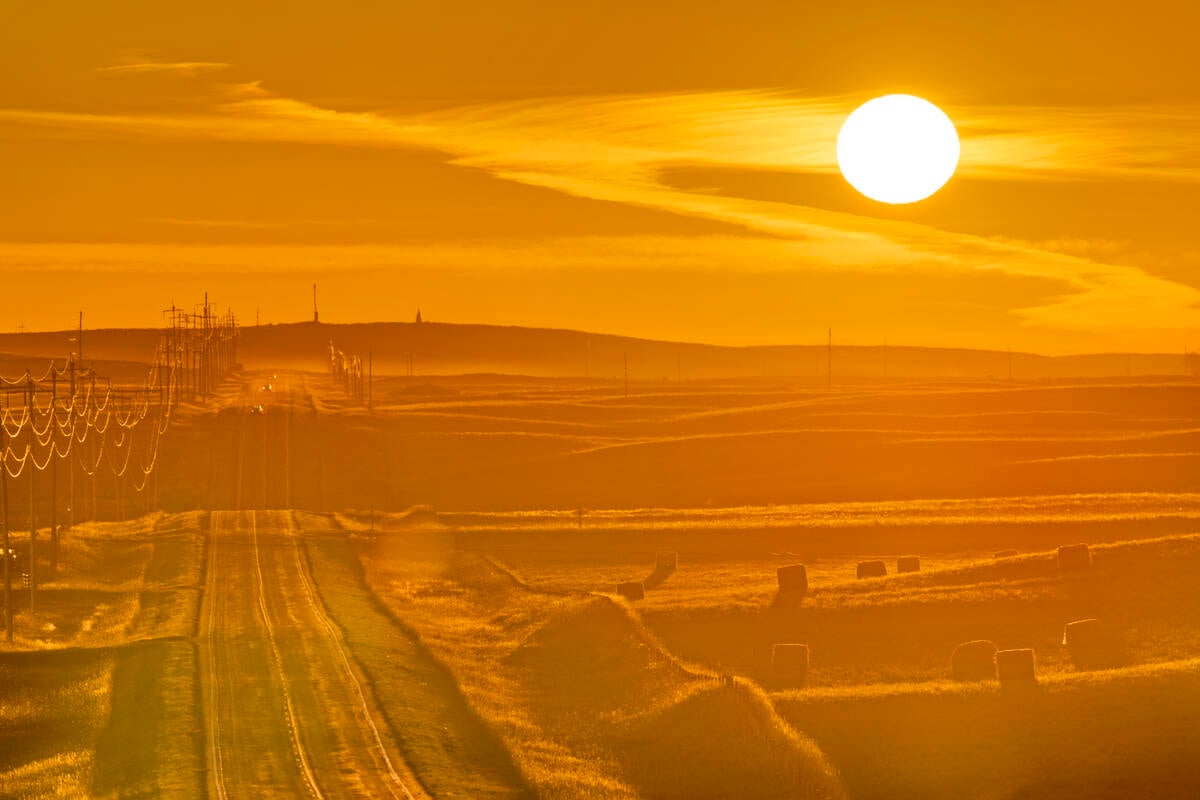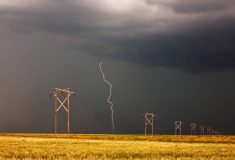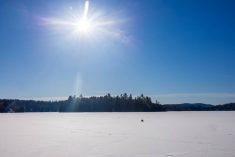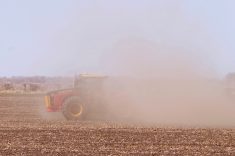Prairie farmers have once again been watching the skies for rain this summer, along with thousands of firefighters and the tens of thousands of people displaced by wildfires across Western Canada.
If it seems the rain we do receive these days doesn’t go as far as it did in the past, it’s more than a hunch.
We’ve all had the experience of drinking more on a hot day. As it turns out, the atmosphere reacts similarly under global warming.
In the study “Warming accelerates global drought severity” published in the journal Nature, the University of California’s Santa Barbara Climate Hazards Center director Chris Funk says global warming is causing the atmosphere to behave “like a sponge, soaking up moisture faster than it can be replaced.”
Read Also
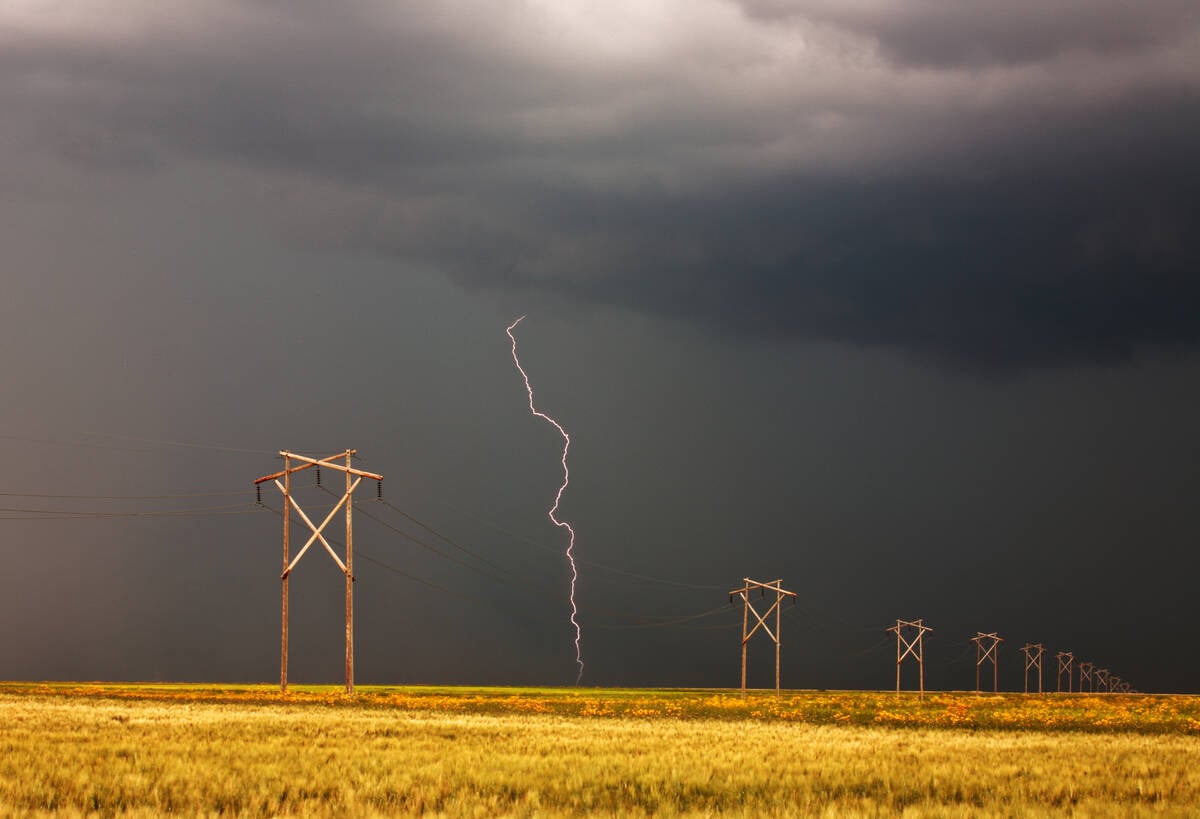
Lightning gives and takes in Prairie fields
Lightning in fields can be a source of nitrogen but at times can result in crop damage which, at a glance, resembles a very localized disease outbreak, plant pathologist Ieuan Evans writes.
In other words, the air is getting thirstier — a phenomenon that researchers say has increased the intensity of global droughts by 40 per cent over the past four decades.
“Drought is based on the difference between water supply (from precipitation) and atmospheric water demand. Including the latter reveals substantial increases in drought as the atmosphere warms,” Funk says in a release.
Globally, the areas in drought expanded by 74 per cent between 2018 and 2022. Atmospheric evaporative demand (AED) was responsible for 58 per cent of that increase.
“Our findings indicate that AED has an increasingly important role in driving severe droughts and that this tendency will likely continue under future warming scenarios.”
Most now accept that the climate is heating up, although debate continues as to the cause. Less well understood is the connection between global warming and the “desiccating influence of the atmosphere,” Funk said.
The atmosphere’s growing thirst adds a third dimension to precipitation and soil moisture equation driving crop yields — one that could challenge the viability of contemporary crop rotations.
University of Manitoba researchers recently published a study on how different crop combinations perform under drought conditions.
“The main objective of this study was to compare cropping systems that incorporated … diversity, intercropping, cover cropping, and heat tolerance with a “business-as-usual” rotation,” the research team, consisting of Samantha Curtis, Martin Entz, Katherine Stanley, Doug Cattani and Kim Schneider, reports in the Canadian Journal of Plant Science.
Atmospheric dryness (measured as vapour pressure deficit) during the two-year study in 2020-2021 was well above the long-term average.
The business-as-usual rotation selected for this study was wheat-canola-wheat-soybean, grown over two years at the Ian N. Morrison Research Farm located at Carman, Man.
The study also included a warm-season combination (corn-sunflower-dry bean-canola), a biodiverse rotation containing nine crops (fall rye with a cover crop-intercropped corn and soybeans-intercropped peas and canola-green fallow mixture), a perennial grain (Kernza intermediate wheat grass) and an organic rotation (millet-green fallow mixture-wheat).
The business-as-usual rotation yielded only 71 per cent of the biodiverse rotation and 59 per cent of the warm-season rotation. It also had a lower net return than the warm season rotation and fewer “live root days,” which is a measure of soil health potential, than either the biodiverse or the warm-season rotation.
The biodiverse rotation resulted in a net return similar to the business-as-usual crop mix, but needed half as much the nitrogen fertilizer. “While the biodiverse rotation required more seeding passes and greater plant diversity knowledge, the benefits observed here suggest that incentives and educational programs to speed adoption of biodiverse systems should be a priority,” the research report says.
“If growing conditions in Manitoba continue to become hotter and drier as predicted, growing more water-use efficient crops such as fall rye, corn, sunflower, and corn-soybean intercrops would increase climate resilience.”
A drying atmosphere also sets stage for the devastating wildfires now sweeping through wide swaths of Western Canada’s boreal forests every spring and summer, creating the prolonged and hazardous smoke conditions cloaking the region.
One of the unanticipated outcomes from all that smoke is its counterbalancing effect cooling things down.
A recently released University of Washington paper says wildfires in Canada and Siberia may reduce the earth’s warming by up to 12 per cent globally and 38 per cent in the Arctic over the next 35 years.
“Because the aerosols in smoke brighten clouds and reflect sunlight, summer temperatures during fire season drop in northern regions, leading to reduced sea ice loss and cooler winter temperatures,” lead author Edward Blanchard-Wrigglesworth says in a release.
No one can say this is good news. The authors point out that wildfires are expected to intensify in coming years, which doesn’t bode well for human health or forest biodiversity. And their effects on the boreal forest may escalate the release of more carbon into the atmosphere.
What all this is telling us is that even with computer modeling, improved real-time monitoring and technologies such as the emerging AI, we don’t have a good handle on the cascading effects of a changing environment. The effects and counterbalances are constantly setting new changes in motion.
I am reminded of an expression I’ve heard now and again from some of the more seasoned farmers I know: “Nature always bats last.”


